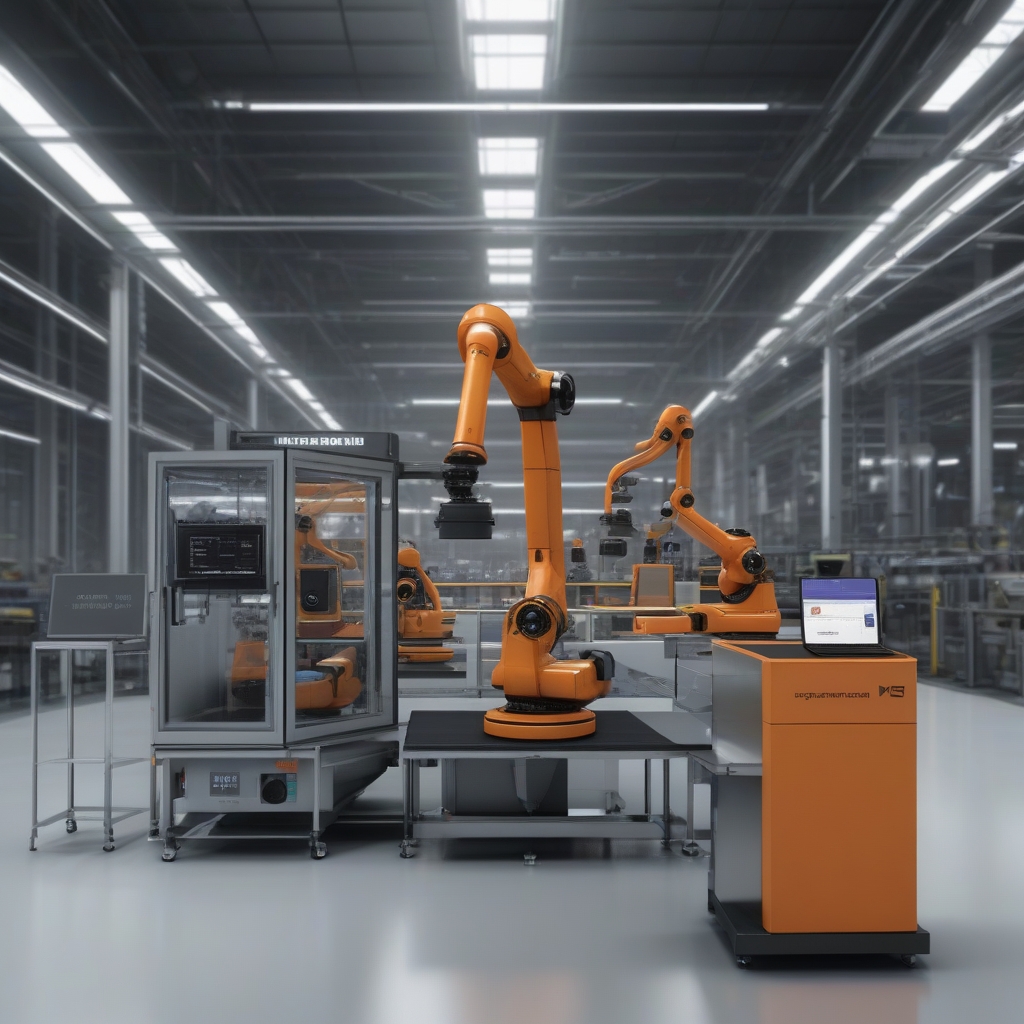Introduction
In the rapidly evolving world of industrial automation, the integration of artificial intelligence (AI) is reshaping the landscape, enhancing efficiency, accuracy, and productivity. Among the many innovative applications of AI, one stands out for its profound impact: the AI-powered smart camera. This advanced technology is revolutionizing industrial automation and inspection processes, setting new benchmarks for precision and efficiency.
The Evolution of Industrial Automation and Inspection
Traditional Systems
Historically, industrial automation and inspection relied heavily on human intervention and basic mechanical assistance. These traditional systems, while functional, often suffered from limitations such as:
- **Inconsistencies and Errors**: Human inspection is prone to errors, particularly in repetitive tasks.
- **Limited Scalability**: Scaling operations required significant resource investments.
- **Inefficiencies**: Manual processes are inherently slower and less efficient.
As industries globalized and competition intensified, the demand for more efficient and reliable systems grew, paving the way for technological advancements.
The Advent of AI in Industrial Settings
The infusion of AI into industrial environments marked a turning point. Advanced algorithms, machine learning, and neural networks brought about capabilities previously thought unattainable. AI systems began to understand patterns, learn from data, and make intelligent decisions, all in real-time. This evolution set the stage for the development of AI-powered smart cameras.
AI-Powered Smart Cameras: The Game Changer
AI-powered smart cameras are at the forefront of this technological revolution, bringing a host of benefits to industrial automation and inspection:
Enhanced Precision and Accuracy
One of the standout features of AI-powered smart cameras is their exceptional precision. These cameras are equipped with state-of-the-art sensors and sophisticated algorithms that allow them to:
- **Detect minute defects** on assembly lines, such as microchips and circuit boards.
- **Analyze complex patterns** that human eyes might overlook.
- **Ensure consistent and reliable inspections**, reducing error rates dramatically.
Increased Efficiency
By automating inspection processes, AI-powered cameras streamline operations, leading to significant efficiency gains. Key benefits include:
- **Faster processing times**, as cameras can inspect and analyze components instantaneously.
- **Continuous operation** without fatigue, unlike human inspectors.
- **Reduction in labor costs**, freeing up human resources for more strategic tasks.
Adaptability and Learning
AI-powered smart cameras leverage machine learning to adapt and improve over time. They can:
- **Learn from previous inspections** to identify defects and anomalies more accurately.
- **Adjust to new patterns** and requirements without needing extensive reprogramming.
- **Integrate with other AI systems** for comprehensive industrial automation solutions.
Applications in Diverse Industries
The versatility of AI-powered smart cameras makes them invaluable across various industries:
Manufacturing
In manufacturing, these cameras are utilized for tasks such as:
- **Quality control on assembly lines**, ensuring products meet stringent standards.
- **Monitoring robotic operations** to detect and rectify anomalies.
- **Inspecting components and parts** with micron-level precision.
Automotive
The automotive industry benefits significantly from AI-powered smart cameras through:
- **Detailed inspections of vehicle components**, such as engines and electronic systems.
- **Ensuring compliance with safety regulations** by identifying potential defects early on.
- **Enhancing production line efficiency**, reducing turnaround times and costs.
Electronics
In the electronics sector, these smart cameras:
- **Inspect microchips and circuit boards** with unparalleled accuracy.
- **Guarantee the integrity of intricate components**, crucial for high-performance devices.
- **Support rapid prototyping**, enabling faster innovation cycles.
Challenges and Considerations
While AI-powered smart cameras offer numerous advantages, there are considerations to address:
Implementation Costs
The initial investment in AI-powered systems can be substantial. However, this cost is often offset by long-term gains in efficiency and precision.
Data Security
With AI systems processing sensitive data, ensuring robust cybersecurity measures is critical to protect against potential breaches and maintain data integrity.
Integration with Existing Systems
Integrating AI-powered cameras with legacy systems can be challenging. It requires careful planning and possibly upgrading other components to ensure seamless operation.
Future Prospects
The future of AI-powered smart cameras in industrial automation and inspection looks promising. Advancements in AI algorithms, enhanced sensors, and connectivity through IoT (Internet of Things) are expected to drive further innovation. Potential developments include:
- **Greater interconnectivity** between smart cameras and other automated systems.
- **Enhanced AI capabilities**, allowing for even more sophisticated inspections.
- **Broader applications** across new industries and use cases.
Conclusion
AI-powered smart cameras are transforming the industrial landscape, bringing unprecedented levels of precision, efficiency, and adaptability to automation and inspection processes. As industries continue to embrace AI, these smart cameras will play a pivotal role in driving innovation, reducing costs, and ensuring quality. The integration of AI technology in industrial settings is not just a trend but a significant stride towards a smarter, more efficient future.
By investing in AI-powered smart cameras, industries can set new standards, stay ahead of the competition, and navigate the complexities of modern manufacturing with confidence.

Leave a Reply